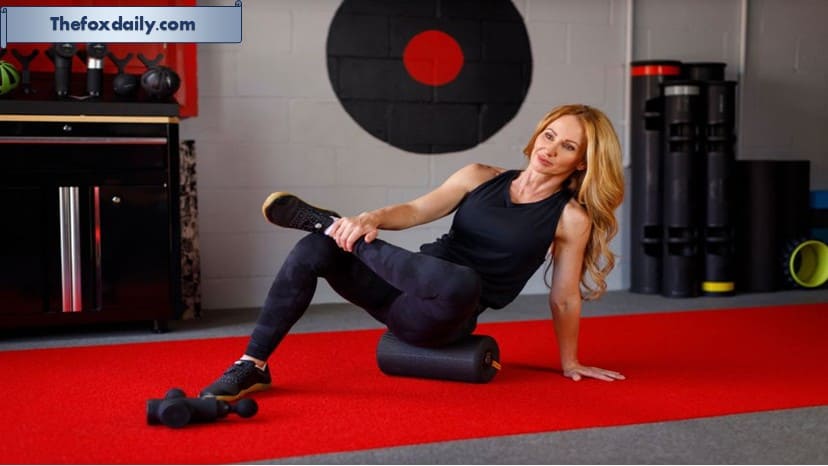
Stretching before and after exercises, foam rolling, and even routinely seeing a massage therapist don’t seem to completely relieve that lingering stiffness in your shoulder, hip, or back.
In fact, stretching can actually make the tightness worse. Your body may be tight, but it may also be using involuntary muscular spasms to protect itself if this scenario seems familiar.
Anyone who suffers from persistent stiffness, recurrent discomfort, or temporary mobility gains that don’t last must understand the difference between protective tension and mechanical tightness.
Recognizing the distinction between mechanical tightness and protective tension is crucial for anyone experiencing chronic stiffness, recurring pain or short-term mobility gains that just won’t stick.
Knowing how your body defends itself
Your nervous system continuously scans your body for possible risks, including internal instability, wounds, and weaknesses in addition to exterior threats. Your body limits movement in sensitive places by producing protective tension when it senses a threat to bodily function.
Numerous things might cause this protective reaction, such as bad posture or movement patterns that cause misalignment, ongoing stress that keeps your body on high alert, unstable joints that make your nervous system feel unsafe, or injuries from the past that never completely healed. Protective tension, as opposed to basic mechanical muscle stiffness brought on by overuse, is your body’s attempt to create stability where it feels unstable.
I continuously evaluate my clients as a professional sports mobility coach to make sure we don’t miss any areas where protective tension is present. To prevent it from becoming ineffective, it’s critical to recognize it and take immediate action. Otherwise, what may begin as a protective measure might develop into long-term stress that restricts mobility, causes discomfort, and defies conventional stretching and soft-tissue release methods like foam rolling and massage.
How to identify protective tension
How can you determine if your stiffness is mechanical or protective?
Based on my observations, there are four main indicators:

1. A big warning sign is when an area feels worse after stretching. Your nervous system may be reacting to what it perceives as a threat by generating even more guarding if you frequently stretch a tight region in your neck or back only to experience temporary relief that is followed by additional painful restriction.
2. A protective reaction may be indicated by one-sided tension that is insensitive to bilateral stretching. For instance, if you stretch both sides equally but only your right hip flexor feels tight, your neural system might be protecting that particular area for a reason. This could be because of joint instability, weakness, pelvic misalignment, or the aftereffects of an earlier injury.
3. Another powerful sign is persistent tightness in the same places even after regular stretching. The problem might not be muscle length but rather nervous system protection if you have been performing hamstring stretches on a regular basis for months without seeing any long-term benefit.
4. Protective guarding is also suggested by painful stiffness that varies significantly in intensity depending on stress levels, sleep quality, or emotional condition. Physical activity directly correlates with basic mechanical tightness, which goes away in a few days. Protective tension, on the other hand, is more persistent and varies according on your nerve system’s general condition.
See your physician to find out whether you have any underlying injuries or other pathological conditions that need further care if you have any of these possible signs of defensive tension.
Don’t fight your nervous system; instead, work with it.
Keep in mind that defensive tension is not just a muscle condition; it is a reflex of the neurological system. It is not enough to just “stretch out” affected muscles. By causing deep muscle lengthening that makes your nervous system feel threatened, typical stretching far too frequently actually makes things tighter.
In order to make your body feel secure enough to relax and start working to restore healthy movement patterns, a kinder, more thorough mind-body approach that takes into account the condition of your entire neurological system is required.
Frequent activities that support nervous system regulation, like meditation, breathing techniques, and taking nature walks, can assist your body release defensive habits and reduce stress.
Postural control and core stability are also essential for promoting a sense of security in your neurological system. The foundation your nervous system requires to enable mobility in other regions is provided by a strong, solid core. Your nervous system may produce tension in other locations to make up for the ineffective deep stabilizing muscles.
Your nervous system’s ability to identify threats is directly impacted by the quality of your sleep. Even in reaction to everyday activities, inadequate sleep might cause your nervous system to become more reactive, resulting in elevated defensive tension.
Advice for gradually achieving long-term mobility

To get the best results, choose the corrective exercises that are best for you by consulting with a physical therapist or certified trainer who is knowledgeable about protective tension.
To downregulate your nervous system and put it in a more responsive state, spend a few minutes practicing deep, rhythmic breathing before starting any mobility exercises.
Repeat the stress-relieving 5-7-3 breathing technique five or six times: After five counts of inhalation and seven counts of exhalation, wait for three counts before taking another breath.
Your nervous system is directly impacted by your breath: Rapid, shallow breathing can cause a sympathetic “fight-or-flight” state, which leads to greater guarding, whereas slow, controlled breathing indicates safety and puts you into a parasympathetic “rest-and-restore” state.
When performing any kind of stretching or mobility training, make an effort to breathe deeply and slowly. Instead of pushing yourself to your limit, start with small, controlled motions that remain within your comfortable range of motion. This approach keeps your nervous system from sounding the alarm, showing it that movement can be safe and controlled rather than forced or aggressive.
Strength training for stability should be combined with mobility practice to produce long-lasting effects. Protective tension often exists because your nervous system doesn’t trust that a joint or region is strong or stable enough to handle the demands placed on it. By improving strength and control, you are building the stability your body needs to feel supported.
Lastly, remember to give proper rest and recuperation first priority. The nervous system will be far more likely to let go of defensive mechanisms and permit functional movement if it has received enough sleep.
Keep in mind that your body’s defensive reactions are not challenges to conquer, but rather perceptive signals about what your internal systems require to feel secure and perform at their best. By respecting this knowledge, you’re creating the groundwork for long-term pain management and mobility.
For breaking news and live news updates, like us on Facebook or follow us on Twitter and Instagram. Read more on Latest Health on thefoxdaily.com.





COMMENTS 0